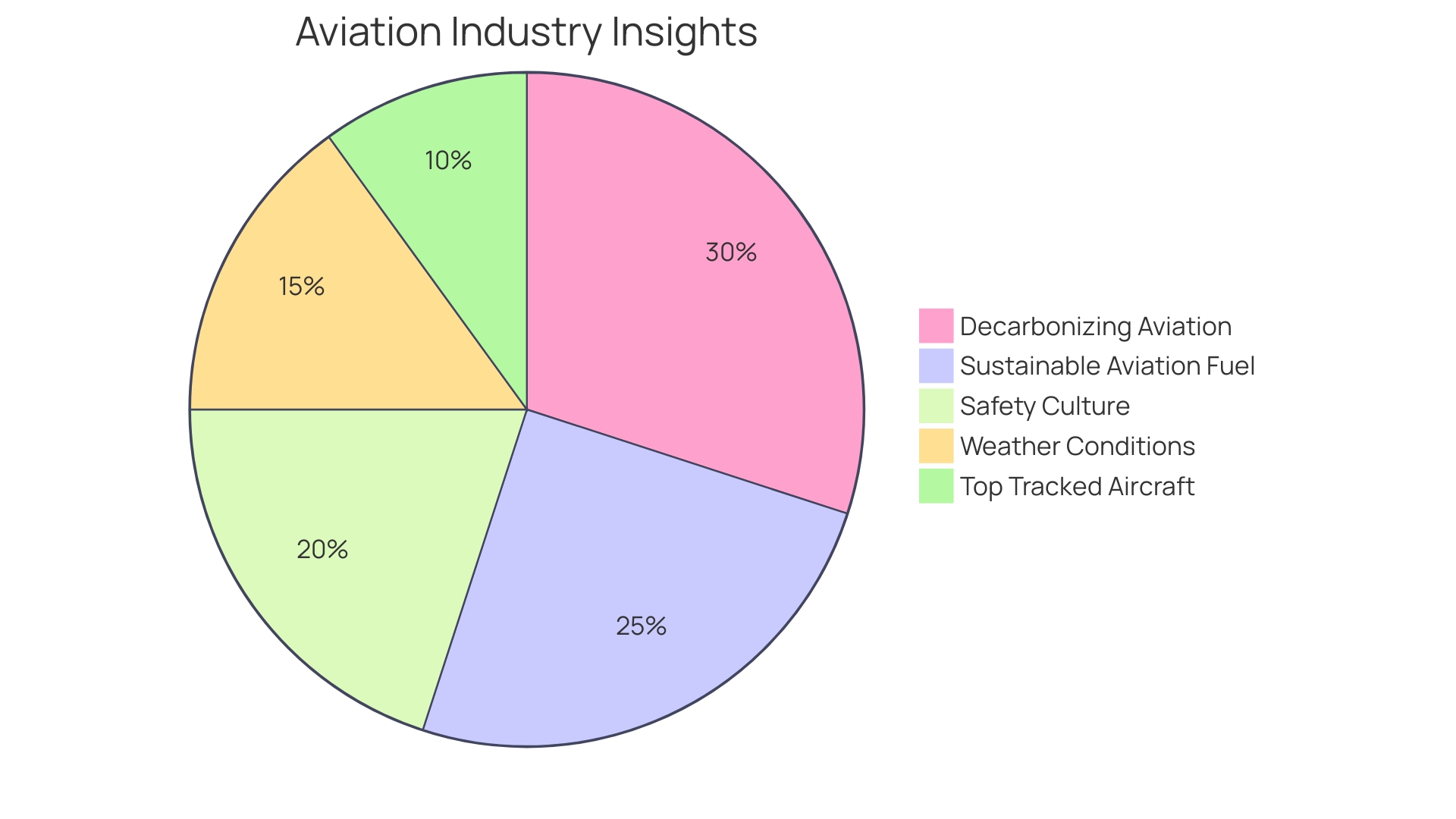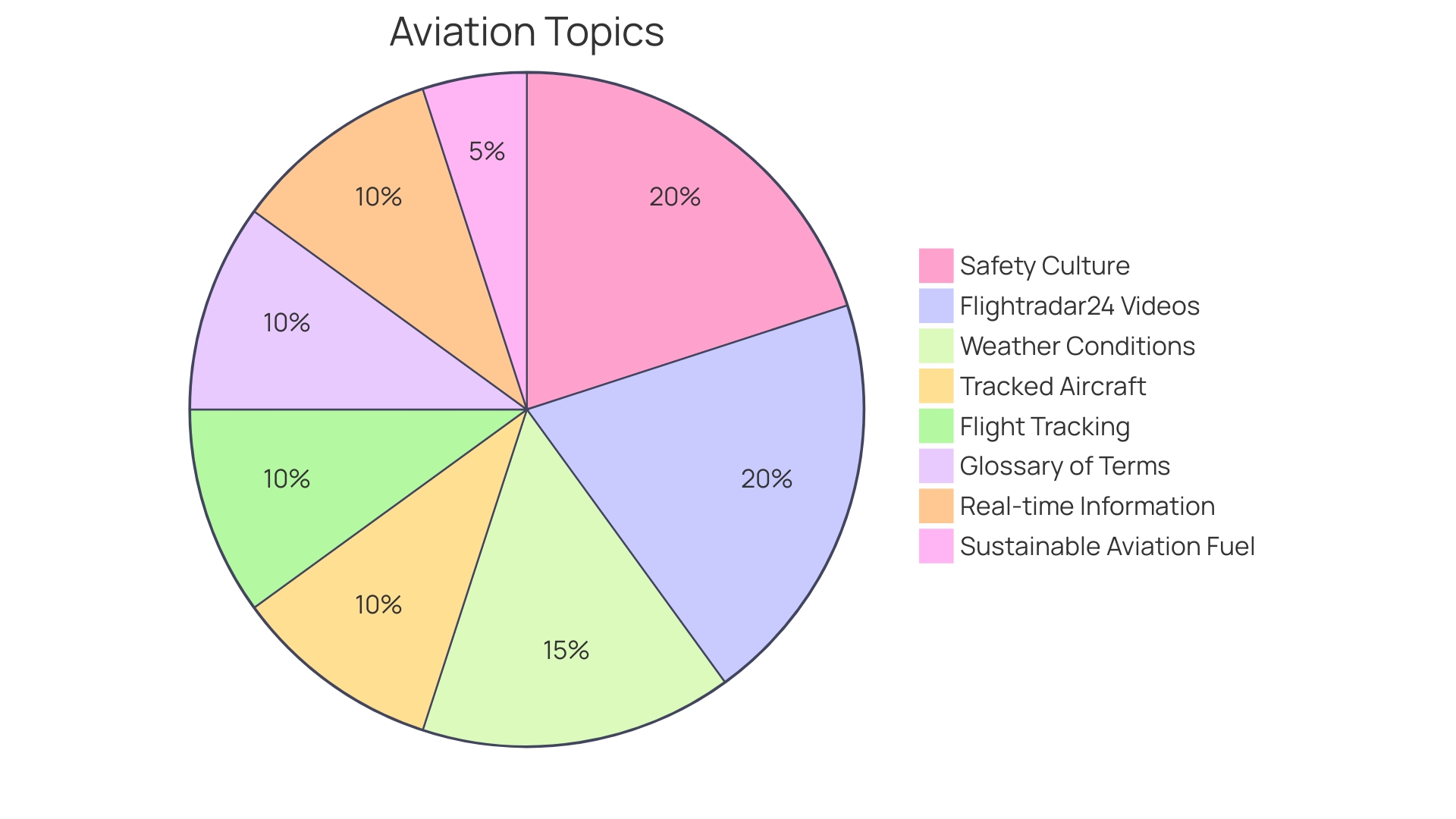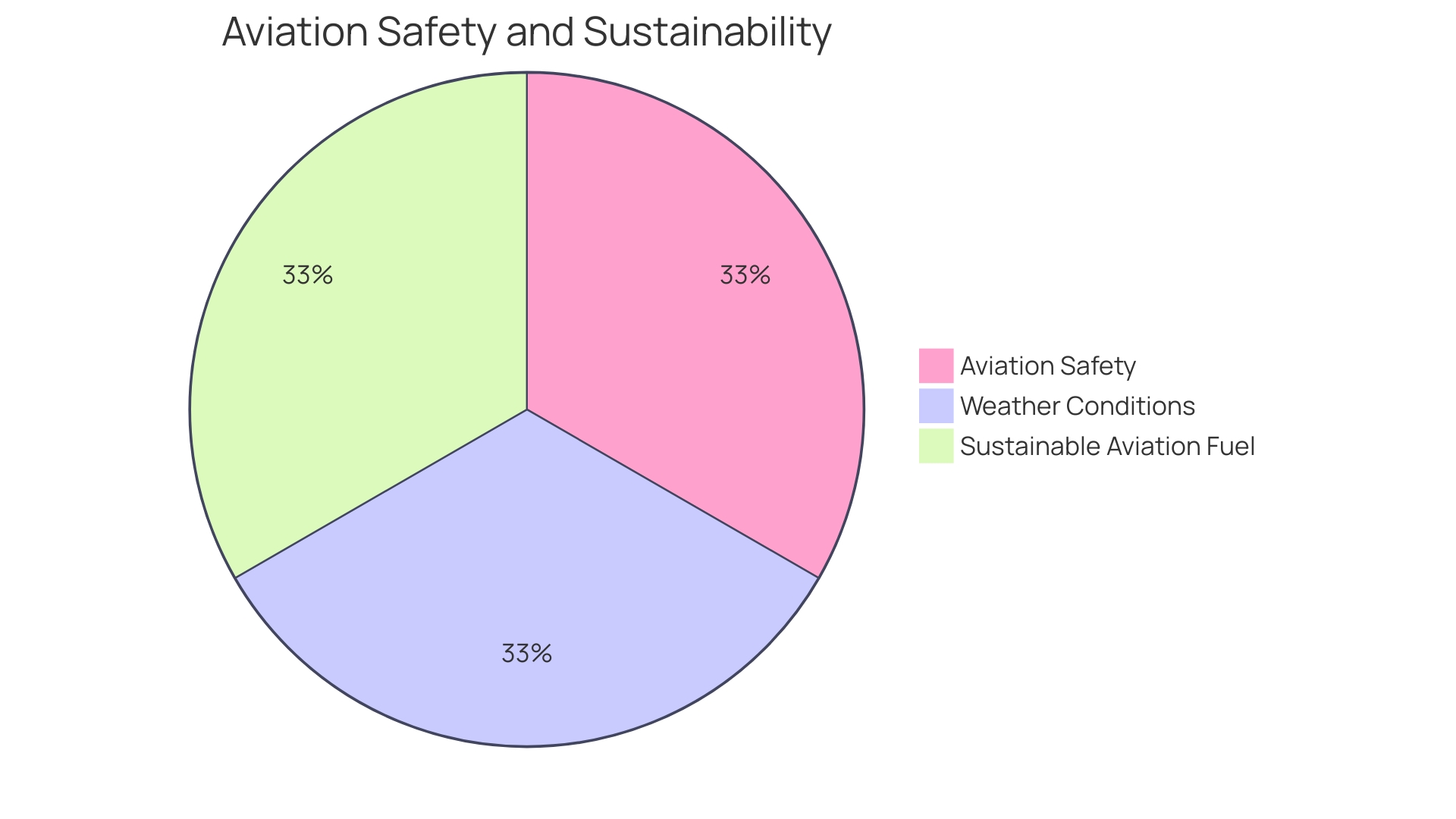Introduction
The aviation industry is on a mission to achieve net-zero carbon emissions, and Sustainable Aviation Fuel (SAF) is emerging as a crucial player in this sustainability journey. Despite currently powering only a fraction of flights, the significance of SAF cannot be overstated. Virgin Atlantic's recent success in operating a flight on 100% SAF highlights the progress and commitment of airlines to reduce their carbon footprint.
SAF, derived from sustainable feedstocks, offers a near-term solution to cut emissions and bridge the gap between current practices and future technological advancements. Incentives and mandates are being debated globally to escalate SAF production, with different regions favoring different approaches. Policymakers and industry leaders recognize that fostering the production and adoption of SAF is critical for sustainable travel.
The article delves into the sources and feedstocks for SAF production, the technologies involved, the benefits of SAF on carbon emissions, current milestones and deployments, and the future of SAF production. It also explores the policy and regulatory support needed for SAF adoption and highlights the global efforts and collaborations in SAF development. The aviation industry's commitment to sustainability is demonstrated through innovative partnerships, customer-focused initiatives, and a shared vision for a greener future.
Why SAF is Crucial for Aviation's Sustainability
As the air transport sector propels towards a more sustainable future, Sustainable Aviation Fuel (SAF) emerges as a key player in the journey to net-zero carbon emissions. Despite currently powering only a fraction of flights, Saf's significance cannot be overstated. The transition to SAF is marked by Virgin Atlantic's recent success in operating a flight on 100% SAF, showcasing the tangible progress and commitment of airlines to reduce their carbon footprint.
The creation and usage of SAF are crucial in reducing carbon emissions in the airline industry, a sector that, despite only contributing a small 2% to 3% of worldwide emissions, poses a significant obstacle due to its dependence on fuels with high energy density. SAF, derived from sustainable feedstocks, offers a near-term solution to cut emissions and is critical in bridging the gap between current practices and future technological advancements.
Incentives and mandates are being debated globally as mechanisms to escalate SAF production, with the European Union favoring mandates, the United States leaning towards incentives, and Japan adopting a hybrid approach. These policy tools are essential for spurring innovation in SAF production technologies, such as Hydro-processed Esters and Fatty Acids (HEFA) and alcohol-to-jet fuel.
Virgin Atlantic's significant achievement signifies a notable progression for the whole air transportation sector towards achieving net-zero emissions. As the airline continues to expand its operations, including recent launches of new routes to Austin and Tampa, it emphasizes the importance of a multi-faceted strategy that includes fleet modernization, customer-focused initiatives, and a responsible mindset throughout the travel experience.
The environmental imperative of SAF is underscored by the pressing reality of climate change, with increasing extreme weather events and the urgent need for effective climate action. Achieving net-zero emissions entails a delicate balance between reducing greenhouse gases and offsetting unavoidable emissions, with SAF playing a crucial role in the reduction strategy for the air transport sector. Policymakers and industry leaders alike recognize that fostering the production and adoption of SAF is a critical step in ensuring sustainable travel for future generations.
Sources and Feedstocks for SAF Production
The quest to reduce carbon emissions in aviation is leading to significant advances in the development and application of Sustainable Aviation Fuel (SAF). SAF is not a single substance but a range of potential alternatives to conventional jet fuel, each with its own production pathway and raw material sources, often referred to as feedstocks. These feedstocks include, but are not limited to, vegetable oils, fats, greases, and various waste and residue materials. Feedstock flexibility is crucial for SAF as it allows for the utilization of regionally available resources, thus supporting local economies and reducing transportation-related emissions.
One of the notable milestones in this arena was achieved when a transatlantic flight successfully utilized a blend of conventional jet fuel and SAF derived from fats and sugars. This historical flight underscored the potential of SAF to leverage diverse feedstocks, even those as unconventional as the waste products from biological processes. This diversification of raw materials is central to the sector's aspirations, as highlighted by leading airlines that have set ambitious targets to achieve net-zero emissions by 2050.
The strategic importance of SAF is further emphasized by national initiatives, such as those in the United States, where the government has committed to a near-term target of 3 billion gallons of SAF production per year by 2030. This will contribute to the long-term goal of 35 billion gallons annually by 2050, which aligns with the broader effort to mitigate greenhouse gas emissions across the transportation sector. Accomplishing these targets necessitates scaling up the production of low-input, sustainable biomass crops, which are integral to the feedstock supply chain for SAF production.
Moreover, the production of SAF must adhere to rigorous sustainability criteria, ensuring that the feedstocks are sourced responsibly. Companies like Neste have established meticulous sourcing protocols, complete with third-party sustainability audits, to ensure that their SAF production aligns with legal sustainability requirements and their own Supplier Code of Conduct.
As SAF production scales up, it is expected to play a crucial role in decarbonizing the air travel field, which currently accounts for approximately 2 percent of global carbon emissions. The challenge lies in increasing SAF supply sufficiently to meet the industry's energy demands. Current production levels are not yet sufficient to fully substitute traditional jet fuel, but continuous research, investment, and policy support are anticipated to close this gap and propel the shift towards a more environmentally friendly aviation sector.
Technologies for Producing SAF
Exploring the realm of Sustainable Aviation Fuel (SAF) production, we delve into the intricate processes that transform various feedstocks into the clean-burning substances required to propel today's aircraft towards a greener future. At the forefront of these technologies is the Hydroprocessed Esters and Fatty Acids (HEFA) process, which stands out due to its established pathway in converting oils and fats into renewable jet. This is complemented by the Fischer-Tropsch process, a method capable of synthesizing jet fuel from gasified biomass, and the emerging Alcohol to Jet (AtJ) process, which converts alcohols derived from sustainable sources into jet fuel.
These technological pathways are instrumental in the aviation sector's transition to low-carbon operations. An exemplary instance is Virgin Atlantic's groundbreaking flight, indicating a noteworthy progress for the sector's net-zero aspirations. Furthermore, partnerships in the sector, such as Neste's collaboration with Airbus, exemplify the collective efforts to decrease emissions from air travel. Meanwhile, insightful analyses from Prime Movers Lab and the World Economic Forum emphasize the necessity for economies of scale in SAF production, underscoring the technology's potential to meet global demand without adding planet-warming gases to the atmosphere.
Despite SAF's currently modest share of only 0.1% of all flights, the fuel's adoption is poised to increase, spurred by incentives and initiatives designed to ramp up production. Indeed, the conversation around SAF continues to develop, considering mandates against incentives and examining the accuracy of production figures, as the sector seeks to navigate the complexities of reducing its carbon footprint. As we witness new routes being established and airlines such as Virgin Atlantic growing their US influence, the incorporation of SAF into mainstream air travel operations becomes increasingly concrete, demonstrating the collective endeavors of the sector to attain a sustainable future.

Benefits and Impact of SAF on Carbon Emissions
Sustainable Aviation Fuel (SAF) has emerged as a game-changing answer to decrease the carbon footprint of flying, providing more than 80% reduction in carbon intensity compared to traditional jet fuels. The recent milestone event of Virgin Atlantic's first transatlantic flight powered entirely by SAF from London to New York exemplifies the airline industry's commitment to achieving net-zero carbon emissions. This flight utilized SAF produced from a blend of cooking oil, recycled carbon, and other waste materials, such as animal fats, underscoring the innovative approach to sourcing greener energy alternatives.
Despite the notable environmental benefits, Saf's adoption is currently less than 0.1% of global aviation fuel consumption, hampered by limited supply, fragmented demand, and higher costs relative to traditional jet fuel. However, the successful Virgin Atlantic flight has demonstrated the feasibility of using SAF for long-haul flights, providing a beacon of hope for the sector's decarbonization efforts.
As the sector wrestles with the challenges of scaling SAF production and addressing non-CO2 impacts of flying, such as contrail cirrus formations, the need for continued innovation and policy support becomes ever more pressing. The potential of SAF to reduce greenhouse gas emissions is a crucial step towards a more sustainable future for air travel, aligning with global climate change initiatives and setting a new standard for environmentally responsible flying.
Current Use and Milestones in SAF Deployment
Sustainable Aviation Fuel (SAF) is quickly changing the field, emerging as a crucial solution for reducing carbon emissions. With only 0.1% of flights currently powered by SAF, its potential for growth is significant. The sector related to flying, recognized for its strict safety norms and infrastructure, is now directing its dedication towards environmental sustainability.
Significantly, Virgin Atlantic's historic flight, powered by 100% SAF, marks a crucial step in the sector's pursuit of net zero carbon emissions. Such milestones are evidence of the cooperative endeavors within the sector, including groundbreaking partnerships like that of Airbus and Neste, aimed at decarbonizing aviation.
The journey of SAF from a novel idea to a key player in sustainable travel is underscored by the importance of education in debunking misconceptions. For example, while some consumers amusingly note Saf's origin from used cooking oil, its broader significance lies in its renewable nature and its role in the sector's move towards net zero.
The sector's dedication to expanding SAF is additionally demonstrated by Emirates' active involvement in working groups and stakeholder engagements. These initiatives are crucial for enhancing SAF production and supply, which is essential for its adoption on long-haul flights that require significant volumes of energy source.
As stakeholders across Europe, the US, and the Middle East collaborate on financial and policy strategies to support Saf's growth, the air transportation industry is poised to make tangible strides in sustainability. This collective effort is not only reshaping the fuel landscape but also fortifying a sustainable future for air travel.

Future of SAF Production: Scaling and Cost Reduction
As the flight industry aims to achieve net zero carbon emissions, the focus has shifted to Sustainable Flight Fuel (SAF) as a crucial element in this transformation. With its capacity to significantly reduce carbon footprints, SAF is pivotal for airlines aiming to align with global decarbonization goals. Key collaborations, such as the pioneering partnership between Airbus and Neste, underscore the industry's commitment to sustainability and the urgency to advance SAF technologies.
The successful scaling of SAF production hinges on a multifaceted approach involving stakeholders from aviation, energy sectors, and government bodies, particularly across strategic regions like Europe, the US, and the Middle East. These partnerships are vital to establish a supportive ecosystem, encompassing financial instruments and policy frameworks conducive to SAF expansion. For instance, the comprehensive transatlantic network spearheaded by Virgin Atlantic and its partners demonstrates a tangible step towards broader implementation of SAF, further evidenced by the airline's historic flight powered entirely by sustainable fuel.
To make SAF economically viable and accessible, the sector must overcome challenges related to production scalability and cost-efficiency. The recent report with insights from various sectors provides actionable recommendations to foster collaboration and leverage key levers to scale SAF production. Furthermore, the flying community's regular inquiries about SAF highlight the necessity for open communication and knowledge-sharing to tackle prevalent concerns and misconceptions.
Virgin Atlantic's continuous innovation, coupled with strategic alliances like the expanded Joint Venture with Air France-KLM and Delta Air Lines, illustrates the potential for cross-industry synergies to propel SAF into mainstream use. This method aligns with the positive perspective of trailblazers who believe in questioning the current situation to attain a viable future for air travel.
The journey towards net zero emissions, as championed by Virgin Atlantic's Flight100, is a testament to the sector's dedication to sustainability. Such milestones resonate with the sentiments expressed by UK Transport Secretary, affirming the role of SAF in enabling passengers to fly sustainably. As the sector advances, the sharing of market knowledge and the development of technology will continue to be crucial to the widespread acceptance of SAF and the eventual achievement of a decarbonized air travel environment.
Policy and Regulatory Support for SAF Adoption
The development of Sustainable Aviation Fuel (SAF) is a testament to the sector's commitment to reducing carbon emissions. A recent groundbreaking flight, fueled by a combination of non-traditional energy sources such as fats, starches, and sugars, indicated a fresh path for air travel. This flight, a significant achievement for companies like Virgin Atlantic, showcases innovative collaboration and customer-focused service, reflecting their push towards a net-zero carbon future.
The European Union, with its 'Fit for 55' package, is leading the charge towards SAF adoption. The ReFuelEU Aviation initiative is a cornerstone of this strategy, aiming for a 55% reduction in net greenhouse gas emissions by 2030 and climate neutrality by 2050. Recently concluded negotiations between the Council and European Parliament have cemented a provisional political agreement, setting the stage for a leveled playing field in sustainable air transport starting from 2025.
In the United States, SAF production is critical to decarbonizing one of the fastest-growing sectors in transportation. With commercial aircrafts averaging a lifespan of 20 to 30 years, reliance solely on aircraft design improvements or electrification is impractical. This is where SAF becomes the most viable option for decarbonization. Current production meets less than 0.2% of the industry's needs, but the Biden administration aims for 100% by 2050.
The perspectives from stakeholders across the air travel and energy industries highlight the necessity for collective endeavors and financial and policy mechanisms to expand SAF efficiently. With regions like the Great Lakes and the Rocky Mountains exploring the potential of SAF, the future of flight looks cleaner and greener. The path towards a sustainable air travel sector persists, with every achievement propelled by creativity and a collective aspiration for a healthier planet.
Global Efforts and Collaborations in SAF Development
The quest for a greener sky is gaining altitude with the advent of Sustainable Aviation Fuel (SAF), a pivotal innovation for the decarbonization of the aviation sector. As the industry sets its compass toward a net-zero carbon emission target by 2050, the role of SAF is becoming ever more critical. At present, this sustainable energy source is produced from different waste and residue raw materials, like utilized cooking oils and animal fats, instead of crude oil, providing a feasible substitute to traditional jet fuel. Its compatibility with existing aircraft engines and infrastructure as a 'drop-in' solution underscores its potential for immediate impact.
The implementation of SAF is demonstrated by Delta Air Lines' commitment to replace 10% of its annual 4 billion gallons of jet fuel with SAF by 2030. This ambitious goal is complemented by a rigorous program to decrease the consumption of energy by at least 10 million gallons each year through the same period. Such forward-thinking initiatives are crucial since jet fuel accounts for approximately 90% of the sector's carbon emissions.
Additionally, innovative collaborations are emerging, as demonstrated by the cooperation between Airbus and Neste, which is leading the way in endeavors to reduce carbon emissions in air travel. These partnerships are not just about exchanging knowledge but also about laying the groundwork for sustainable practices throughout the sector. Virgin Atlantic's recent historic flight, powered entirely by SAF, serves as a testament to what can be achieved through determination and innovation. The airline's trajectory since 1984 has been marked by challenging the status quo in pursuit of environmental stewardship.
Despite these advances, the penetration of SAF in the market remains low, with only 0.1% of flights being powered by it. This highlights the need for enhanced education and debunking myths around SAF, such as the whimsical belief that it smells like French fries due to its cooking oil origins. It's not just about changing perceptions; it's about demonstrating the tangible advantages of SAF and its role in the journey towards a sustainable future.
The path to scaling up SAF production is complex and requires concerted efforts from a myriad of stakeholders. Reports have identified Europe, the US, and the Middle East as key regions where insights from the air travel and energy sectors, coupled with public policy, can foster a conducive environment for SAF growth. Through collaborative action and leveraging financial and policy instruments, the aviation industry can soar towards a more sustainable horizon.

Conclusion
In conclusion, Sustainable Aviation Fuel (SAF) is a crucial component in the aviation industry's pursuit of net-zero carbon emissions. Derived from sustainable feedstocks, SAF offers a near-term solution to cut emissions and bridge the gap between current practices and future technological advancements. The industry's commitment to sustainability is evident through collaborations, milestones, and ambitious targets, such as Virgin Atlantic's successful flight powered by 100% SAF.
Technological advancements, like the Hydroprocessed Esters and Fatty Acids (HEFA) process, are driving SAF production. However, challenges such as supply constraints and higher costs hinder its widespread adoption. To overcome these obstacles, continued innovation, policy support, and efforts to address non-CO2 impacts of flying are necessary.
Scaling up SAF production and ensuring cost efficiency are crucial for a greener future in air travel. Policy and regulatory support, such as the European Union's 'Fit for 55' package and the United States' target of 100% SAF production by 2050, are vital in fostering SAF adoption. The aviation industry's commitment to sustainability, demonstrated through collaborations and milestones, paves the way for a more sustainable future in air travel.




